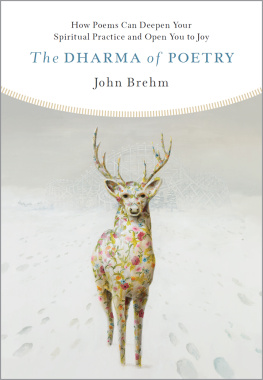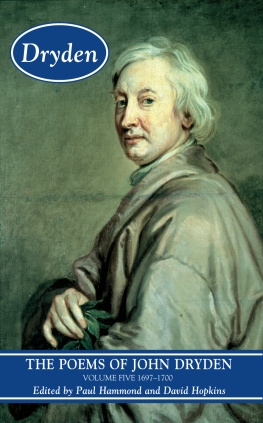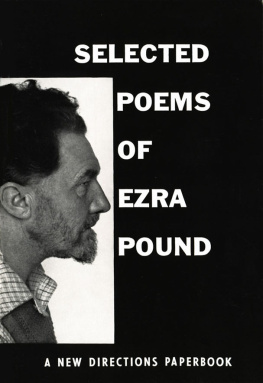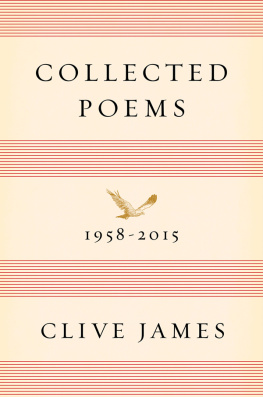THEPACIFICNORTHWESTPOETRYSERIES LINDA BIERDS / GENERAL EDITOR
FOR THE CENTURYS END
POEMS: 19901999
JOHN HAINES
 For the Centurys End,
For the Centurys End, the first volume in the Pacific Northwest Poetry Series, is published with the generous support of Cynthia Lovelace Sears. Copyright 2001 by John Haines Designed by Audrey Meyer All rights reserved. No portion of this publication may be reproduced or transmitted in any form or by any means, electronic or mechanical, including photocopying, recording, or any information storage or retrieval system, without permission in writing from the publisher. Library of Congress Cataloging-in-Publication Data Haines, John Meade, 1924 For the centurys end : poems, 19901999 / John Haines. p. (The Pacific Northwest Poetry series) ISBN 0-295-98145-8 (paper: alk. paper) ISBN 0-295-98160-1 (cloth: alk. paper) I. Title. II. Series. Series.
PS3558.A33 F67 2001 811'.54DC212001033189 The paper used in this publication is acid free and recycled from 10 percent post-consumer and at least 50 percent pre-consumer waste. It meets the minimum requirements of American National Standard for Information SciencesPermanence of Paper for Printed Library Materials, ANSI Z39481984. For Hayden Carruth, Poet and Friend
CONTENTS
PREFACE
The political content prominent in some of the poems collected here has been for me inevitable, an element not to be refused. Events in the daily news, articles and photographs in various journalsthe wars and devastations, the endless flight of refugeesany one of these may at times suggest a theme or require a response. How one chooses to deal with this is a matter of individual talent and persuasion. I have always sought a poetry that, as in the classical past and in the case of many of our prominent modernists, can include the public events of our time and do so in a way that makes them at once contemporary and unavoidably linked with humanitys long and troubled history.
By their nature, some of these poems have exacted a long period of growth as ideas and themes have suggested themselves and been renewed. I refer here especially to three of the longer sequences, each of them dating initially from the early 1970s. In the Cave at Lone Tree Meadow resulted from my exploration of the ancient Chumash Indian culture of southern California, and the artifacts that remain of that culture in museums and books, but also in the many petroglyph sites and painted caves to be found throughout the region. Lone Tree Meadow is but one of these that I was able to explore at the time, but one of a special significance for me. In the House of Wax began with a visit to the Royal Wax Museum in Victoria, BC, in the summer of 1974. One or two later visits to similar museums in Seattle and San Francisco added to my impressions, but the sequence of poems was slow to clarify as I sought to add to the many historical figures and events suggested by those waxen images.
A few of the poems meant to complete the sequence remain unfinished. A Guide to the Four-Chambered Heart originated with a drawing I made for one of my step-children, in which I depicted a human heart pierced by an arrow and divided into four sections, or chambers, in each of which I placed a symbolic figure. The individual sections of the poem grew slowly from that moment. On occasion, prompted perhaps by a news article, I have been moved to include in my poems something of the contemporary attention to the exploration of outer space, and our attempts to find some new ground in the solar systemthe meaning and possible consequence of these efforts. Whatever the success of individual poems, I continue to feel that a poetry of our time should attempt this. Two of the poems included here, Star Photo and NEAR Travels Far to Find Eros, have been for me particularly important in this respect.
I have often felt that we write at our best, most deeply and permanently, out of an ancient and durable sense of our earthly life and experience; that our everyday lives and events may at times return us to an older mythological source, even when, as may be the case, we are not aware of this. I could not, for example, have written The Legend as it stands had I not lived the life I did in my early years in the wilderness of Alaska; and then, many years later, in my initial reading of the epic of Gilgamesh, reflecting on the forest life of animals and the role of the hunter, recognized a parallel, an instinctive return to a very old human conflict, one that has its spiritual dimension not to be put aside. Again, in The Telling, in the main voice of the poem and in the fortune-tellers quoted words: for reasons not immediately clear, certain events in our lives may at moments take on a dimension beyond the ordinary. A few words spoken, a passage in a letter, a gestureperhaps a sequence of theseseem to speak for something we had not guessed the meaning of. It is important here that the subject or event connects us with something intuitively deeper in the self of the author or witness, and is not merely seized upon and exploited for a momentary success. To create, in a work of art, a piece of writinga poem, a novel, a dramasomething of a modern mythos, remains the essential task.
Inevitably, as one moves into ones later years, and with the publication of a collected poems, one considers what may be a last booka summation, or perhaps a postscript. On that note, I make no special claims for the poems collected here, other than to say that they represent, in their form and substance, much of the best I have written in the past decade. In a future book I hope to add to and amplify what is here, as the claims of the writing, of coping with the time of ones life and with events in the outside world, continue to assert their presence. JOHN HAINES
ACKNOWLEDGMENTS
I would like first of all to thank Linda Bierds, Pat Soden, Gretchen Van Meter, and others at the University of Washington Press, for helping to make this book possible. It has been a pleasure to work with them during the past year. I wish also to thank the editors of the following publications in which many of the poems in this book first appeared:
Alea; Amicus Journal; ArtfulDodge; The Atlantic Monthly; Black Moon;Doubletake; The Hudson Review; Manoa; ManyMountains Moving; Mystic River Review; TheNew Criterion; New Virginia Review; The OhioReview; Pemmican.
In the House of Wax, nos. I, II, III, VI, first appeared in The Sewanee Review. City of Orphans and Politics and the Dead were first published in The Sewanee Review, vol. 108, no. 4, Fall 2000. The following poems were published in TemenosAcademy Review, London, UK, in 1998: City of Orphans, Eclipse, The Legend, In the Cave at Lone Tree Meadow.
The American Dream was first published in The Sewanee Review, vol. 109, no. 3, Summer 2001, and in Metre, An American Special Issue, Belfast, Ireland, 2000. A Guide to the Four-Chambered Heart, with illustrations by Joy Haines, was first published by Larkspur Press, Monterey, Kentucky, 1996. The Last Election was published in The BestAmerican Poems of 1999, edited by Robert Bly.
FOR THE CENTURYS END
POEMS: 19901999
Poem for the End of the Century
I am the dreamer who remains when all the dreams are gone, scattered by the millennial winds and sacked by the roadside.
The solar clockhand stopped, confusion and fury on the street so much idle paper shredded and tossed aside. The small, dim shops of the tourist trade are shuttered and locked... Nightfall, and the buyer turns away. One more stolen fortune spent, another century gone with its fits and desolations I leave my house to the creditor wind. Tell me if you know my name, whose face I wear, whose stored-up anger fades to a tentative smile.
Next page





 For the Centurys End, the first volume in the Pacific Northwest Poetry Series, is published with the generous support of Cynthia Lovelace Sears. Copyright 2001 by John Haines Designed by Audrey Meyer All rights reserved. No portion of this publication may be reproduced or transmitted in any form or by any means, electronic or mechanical, including photocopying, recording, or any information storage or retrieval system, without permission in writing from the publisher. Library of Congress Cataloging-in-Publication Data Haines, John Meade, 1924 For the centurys end : poems, 19901999 / John Haines. p. (The Pacific Northwest Poetry series) ISBN 0-295-98145-8 (paper: alk. paper) ISBN 0-295-98160-1 (cloth: alk. paper) I. Title. II. Series. Series.
For the Centurys End, the first volume in the Pacific Northwest Poetry Series, is published with the generous support of Cynthia Lovelace Sears. Copyright 2001 by John Haines Designed by Audrey Meyer All rights reserved. No portion of this publication may be reproduced or transmitted in any form or by any means, electronic or mechanical, including photocopying, recording, or any information storage or retrieval system, without permission in writing from the publisher. Library of Congress Cataloging-in-Publication Data Haines, John Meade, 1924 For the centurys end : poems, 19901999 / John Haines. p. (The Pacific Northwest Poetry series) ISBN 0-295-98145-8 (paper: alk. paper) ISBN 0-295-98160-1 (cloth: alk. paper) I. Title. II. Series. Series.